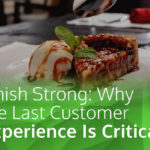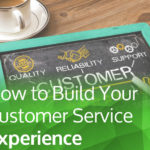You market to get more customers and make more sales, so constantly pushing sales is good, right? Well, not really. If you look at marketing as sales only, you’re not really connecting. And since connections are what drive the long-term relationships that you want to develop, you’re missing out. Even if you do get some sales, you’re likely driving away potential customers with a sell-sell-sell approach.
The Problem with Sell-Sell-Sell
If you’ve ever signed up for an email list or joined a group only to have every email or post ask you to buy something, you know what I’m talking about. The same problem applies to ad-heavy websites. Take BabyCenter.com. Parents or parents-to-be use this site as a source of information about development, child rearing, and other parenting topics.
Sounds great, but their practice is to make you click through sometimes up to 10 pages just to read a single article. And each page is littered with advertising. There’s value, but it gets lost in all the selling—a bad experience to create.
We all know—and expect—that advertising is everywhere—on websites and billboards and the sides of busses. It’s in our mailbox, our inbox, our Facebook feeds.
When people sign up for your e-newsletter or join your group or give you their business card, they expect you to sell to them don’t they? They do, and they’ll tolerate some selling. But here’s the key—you need to offer customer value outside of the product sell too.
If you are all selling all the time, people will opt out. They may literally opt out of your list or they may simply ignore your emails or mailings. Or worse, they may warn others away from your business! There’s a different way.
The Customer Value Solution
Let’s be honest—it’s hard to get people’s attention. Sometimes we think we need to sell-sell-sell, hard and fast. We think it might be our only chance. Or we’ve heard that people need to see things seven times before they act. I’m not advocating for not trying to sell. When you put value first or relationships first, the sell follows more naturally. It attracts rather than smacks.
What does it mean to start with value? Think about what your customer or client needs (or your potential client/customer):
- What questions do they have?
- What information do they need (even if they don’t know it)?
- What worries them?
- What inspires them?
- What problem can you solve for them?
- How do they want to feel?
You give customer value by sharing information that solves or answers these questions for them. An accountant might offer a free checklist of things to bring to your tax appointment. A surf shop might send out daily surf updates. A food co-op might give free recipes for local, in-season ingredients.
Depending on your business, you may take a more personalized, direct approach. Say you talk to somebody at a trade show. You can add value by sending a personal note along with an article related to a question they asked. Personal notes aren’t always feasible for large customer bases, but they can are a great way to boost communication and connection if you have a more focused target audience.
Put Customer Value and Sales Together
You’re in business to sell—whether it is a product or service—but that doesn’t mean that everything is a sales pitch. Beating people over the head with sales pitches doesn’t work, but neither does avoiding making the ask. So lead with customer value. Cultivate your relationship, and then make your offer in a way that also adds customer value.







[…] mode like during the launch of a new program or a key buying season like the holidays, give value. Read more about why value-first marketing is […]